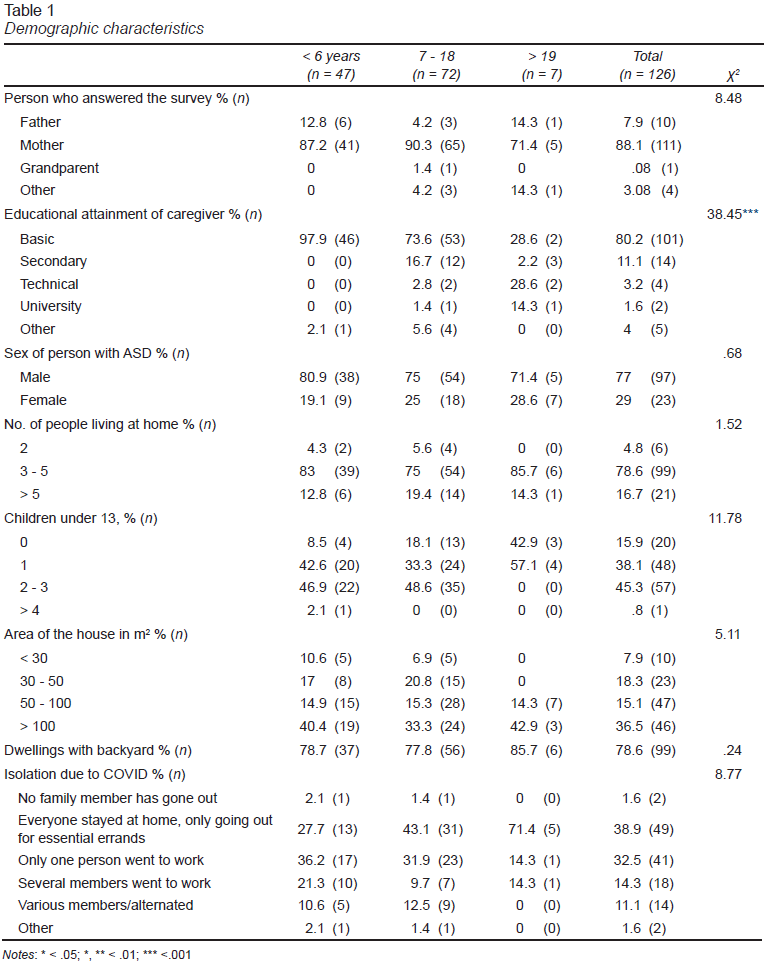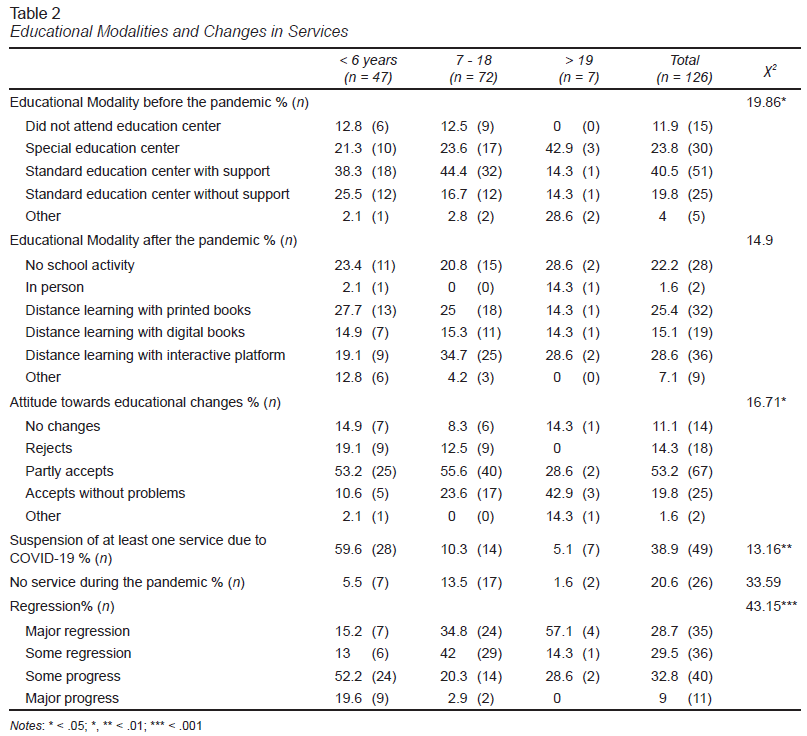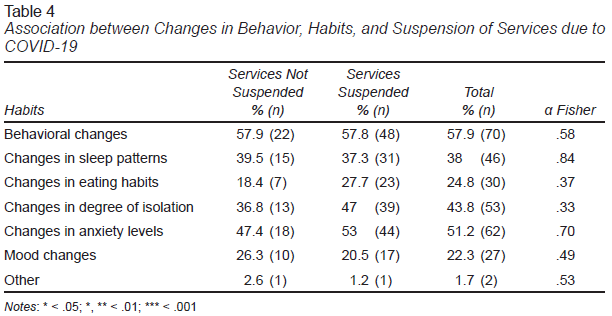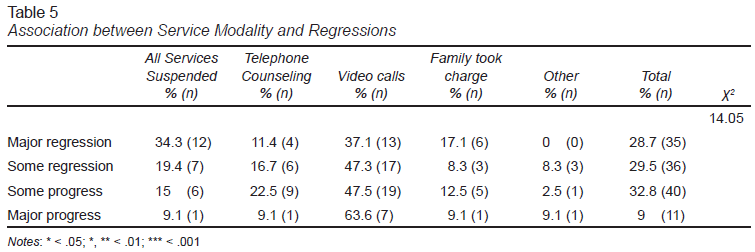INTRODUCTION
The COVID-19 pandemic has had devastating effects on mortality and overburdened health systems, while the ensuing health crisis has affected the mental health of the general population. Furthermore, it is impossible to ignore the social impact on children, especially those living in situations of economic or social vulnerability as is the case in Latin American countries.
In Mexico, the first case of COVID-19 was identified in February 2020. The national government declared a health emergency due to force majeure on March 30, suspending all non-essential activities in the public and private sectors, and enforcing a country-wide lockdown (Secretaría de Salud, 2020). Such a lockdown is a community-wide public health intervention to reduce contagion, combining strategies to limit face-to-face social interactions, enforce physical distancing and mandatory face mask use, and suspend transport or other public services, among other measures. (Cetron & Landwirth, 2005). As a consequence of lockdown, schools have closed, and evaluation consultations and therapeutic sessions been postponed. These measures have intensified the mental health needs of the entire population, placing people with intellectual and/or developmental disabilities in a situation of special vulnerability (Dhiman et al., 2020; Eshraghi et al., 2020).
These vulnerable groups include people with autism spectrum disorder (ASD or autism), a neurodevelopmental disorder characterized by difficulties in two main areas: communication and social interaction, and the presence of restricted, repetitive or stereotyped behaviors and interests (American Psychiatric Association [APA], 2013). In Mexico, one in 115 children are estimated to have this condition (Fombonne et al., 2016). Data from this study and the latest national census (Instituto Nacional de Estadística y Geografía [INEGI], 2020) enable one to estimate that approximately 1,144,000 people currently live with autism spectrum disorder in Mexico.
Given the clinical manifestations of ASD, including difficulty with changes in routines and new situations, it is reasonable to assume that since lockdown constitutes an alteration in their daily lives of people, it will entail additional difficulties for those with ASD. These complications include 1. the suspension of face-to-face services (such as speech or behavioral therapy); 2. behavioral rigidity and difficulty adapting to changes in routines that are specific features of this condition; and 3. the propensity of people with ASD to develop anxiety or depression, and to suffer domestic abuse (Pellicano & Stears, 2020).
Preliminary studies in other countries have yielded mixed results. Parents of children with special needs in the UK reported mood changes, bad temper, behavioral problems, and stereotypical behavior in their children (Asbury, Fox, Deniz, Code, & Toseeb, 2021). Parents of autistic children in Italy reported greater difficulty in everyday activities, and an increase in behavior problems (Colizzi et al., 2020). However, there is a dearth of empirical data on the impact of the COVID-19 pandemic on autistic people in Latin America (Valdez et al., 2021). In Mexico, there is a lack of information on the specific needs of the population with ASD and their use of related services. In addition to the limited number of research studies in the area of autism and the highly disruptive, recent nature of the pandemic, the impact of lockdown on the Mexican population with autism is as yet unknown (White et al., 2021). Additionally, as the distribution of vaccines increases and with many countries planning to reopen, mental health professionals must understand the impact of lockdown on people with autism to minimize its repercussions on this population.
The objectives of this study are to 1. explore caregivers’ perspectives on the repercussions of the COVID-19 lockdown on the autistic population in Mexico; 2. determine the possible association between service suspension and changes in the externalized and internalized behaviors of people with ASD, according to their caregivers’ reports; and 3. describe the impact of lockdown on people with ASD in different age groups.
METHOD
Design of study
This cross-sectional-descriptive study is part of a multicenter project undertaken with the six Latin American countries represented in the REAL collaboration (Argentina, Brazil, Chile, the Dominican Republic, Uruguay, and Venezuela), in addition to Mexico and Peru, which joined the project. The data presented were collected between June and August 2020 through an anonymous, online survey.
Participants
A convenience sample was obtained from the eight participating countries, and a total of 139 people completed the survey in Mexico, 126 of whom were caregivers and 13 people with ASD. For this reason, only the answers of the 126 caregivers were analyzed in this manuscript. The sole inclusion criteria were being a caregiver of a person with autism and living in Mexico at the time of the survey.
Measurements
A survey was designed for this study to explore the impact of the pandemic—and the resulting lockdown or social isolation—on people with ASD in Latin America (Valdez et al., 2021). The survey comprises nine sections:
Place of residence and person answering the survey. Caregivers were asked to choose their country of residence from a cascading menu.
General data on the person with ASD. This section included gender, age, and diagnosis. The DSM-IV and DSM-5 terms were used for the diagnosis (APA, 2000; 2013).
Educational attainment before and during the pandemic, including type of center, educational level, school activity during the pandemic, attitude of the person with ASD towards educational activity.
Home situation during the pandemic. This section includes information on the number of people who lived in the house during the pandemic until that time, and the number of children under the age of 13 living there. A question was added on the size of the dwelling in square meters and whether it had outdoor areas. Recent studies show that housing characteristics in terms of meters/feet or number of bedrooms and bathrooms correlate with health indicators (Melki et al., 2004). An additional question was asked about screen use during this period.
Treatments and support at the start of the pandemic. For this question, a list with 16 different treatment and support options was provided, from which caregivers could select as many as required. They were then asked whether the treatments had been suspended or modified as a result of the pandemic (for example, telephone consultations or video calls), and in the event that they had pharmacological treatment, whether it had been modified during the pandemic.
Behavioral changes due to sheltering-in-place. Respondents were specifically asked about eating, sleeping, aggressiveness, concentration, behavioral regression, irritability, mood changes, and understanding being forbidden to go out.
Going out. This section inquired about social restriction measures in the locality, any outings or walks they had gone on and their effects on the behavior of the person with ASD.
Treatment and support during the pandemic. This section examined the supports used during lockdown, remote therapies and advice, which treatments had been suspended and the reasons for the latter. In addition, parents were asked to state the advantages and disadvantages of remote treatments, in an open-ended question.
Main concerns during lockdown. This included a list of potential caregiver concerns regarding the person with ASD during the pandemic.
The survey was validated by reviewers (seven mental health professionals), to ensure that the wording and the way words were used were appropriate for caregivers. The survey was subsequently piloted with several families in each country to examine the administration process, the length of time it took, and the vocabulary used.
Statistical analysis
Data analysis included central tendency and frequency calculations. All variables were categorized and considered nominal variables. Inter-group comparisons were made using chi-square tests and modified according to their statistical needs. Significant differences in frequency changes were calculated using a McNemar analysis series.
Ethical considerations
Dr. Perez-Liz, the national coordinator for Mexico, obtained approval from the Ethics Committee of Drexel University for data analysis and manuscript preparation since the subjects’ answers contained no identifying data. Approval for the multicenter study and general data collection was granted by The University of Texas Rio Grande Valley (IRB-20-0222, dated 06/17/20) as Dr. Cecilia Montiel-Nava was responsible for centralizing the data collected online through an electronic platform.
RESULTS
For the purposes of this study, the sample was divided into three groups, according to the age of the person with ASD: Early Childhood (0 to 6 years), School Age (7 to 18 years) and Adults (≥ 19 years).
Family and household characteristics. As can be seen in Table 1, the most common respondents were the mothers of people with ASD, who had completed basic education. Of the households surveyed, most comprised three to five members, with children under the age of 13 living at home. A similar proportion of subjects reported that they only left the house for essential errands or work. There were no significant differences between the three age groups as regards family and household characteristics, except for the educational attainment of the caregivers. Further details on the demographic characteristics of the sample are provided in Table 1.
Educational modalities and changes in therapeutic service administration. Once the COVID-19 lockdown began, more than half the individuals received distance education, usually through interactive platforms. Caregivers reported a 10% increase in people with ASD who were not engaged in any school activity after the COVID-19 lockdown was enforced. Those who continued with school activities partially or without problems accepted the educational changes. Most caregivers reported “a major” or “some” regression in the behavior of their children with ASD once lockdown began. A comparison of the age groups found that those under six partly accepted educational changes more frequently than the rest of the ages (χ2 = 16.71, p < .05). Likewise, caregivers of this age group reported the greatest progress, with the greatest regression being observed in the group of schoolchildren and adults (χ2 = 43.15, p < .001). Further details about the educational modalities and changes in services received are available in Table 2.
Changes in service use frequency after COVID-19. As can be seen in Table 3, speech/language and behavioral therapy were the types of therapy most commonly used before the onset of the pandemic. Service suspension occurred in a third of subjects due to lockdown, while a smaller number had not received any service since the start of the pandemic, with the highest percentage of suspension being reported in those under 6 (χ2 = 13.16, p < .01). Once the COVID-19 lockdown began, caregivers reported that speech/language therapy and physical therapy were the most commonly used services, while relational therapies, cognitive rehabilitation and biomedical treatments were the least commonly used ones with no participants. As Table 3 shows, nine of the 15 services showed a significant reduction in use. The services in which the greatest changes were observed were school support and speech/language therapy. Conversely, psychodynamic therapies were the only ones that experienced an increase in use (p < .001) although they continued to be among the least utilized.
Changes in externalized and internalized behaviors and habits. Externalized behaviors with the greatest increase were dysfunctional behaviors, whereas the most frequent internalized behaviors were anxiety and withdrawal (Table 4). There were no significant differences between externalized and internalized behaviors by age group or gender. A series of Fisher tests, to determine whether changes in externalizing and internalizing behaviors were a function of the suspension of services received by people with ASD found no significant increase in externalizing and internalizing behaviors in individuals whose services had been suspended. Likewise, a multinomial regression failed to reveal significant associations between the reports of regression in the behaviors of people with ASD and the service administration modality (face-to-face vs. distance treatments; χ2 = 14.64, p > .05). However, those who experienced total suspension of services due to the pandemic reported the greatest regression, while those who continued to receive services via video calls reported the greatest progress (Table 5).
DISCUSSION AND CONCLUSION
To our knowledge, this is the first study to offer preliminary data on the impact of the COVID-19 lockdown on people with autism in Mexico. In our sample, 38.9% had at least one service suspended after lockdown, while 20.6% had no service suspended since the start of the pandemic. No relationship was found between an interruption in service and changes in externalized and internalized behaviors or the report on regression in our sample. The deterioration of behavior and habits could be related to other factors not covered in the study, such as social isolation, lack of support from school, lack of recreational activities, or even parental stress. Prior to the pandemic, in a study of six Latin American countries, 19% of children and adolescents with autism had failed to receive any kind of service during their lifetime (Montiel-Nava et al., 2020). Complementing this study, Torres et al. (2021) found that 84.4-95.9% of adults were receiving zero hours per week. When these disparities are compounded by a global crisis of the magnitude of COVID-19, it compromises the continuation of services for this highly vulnerable population (Pellicano & Stears, 2020) and there is a risk of exponentially increasing inequities in access to services for people with autism in Mexico.
For many parents, prolonged lockdown and lack of support will exacerbate existing vulnerabilities and contribute to the emergence of new stressors for both parents and people with autism. A study on families with children with developmental disabilities reported that 74% had experienced the suspension of at least one therapeutic or educational service (Jeste et al., 2020). For their part, 3,502 caregivers registered with SPARK reported that most services had been suspended, exacerbating ASD symptoms (White et al., 2021).
The most commonly used services before and during lockdown were speech therapy and behavioral therapy. These results are similar to those in the study undertaken by REAL, where the most commonly used service was speech therapy (Montiel-Nava et al., 2020). Despite the decrease in services due to lockdown, speech therapy, followed by physical, occupational, and behavioral therapies, continued to be the most frequently used service in our Mexican sample, probably because this type of service can be more easily provided through digital platforms (Lee et al., 2015). All services experienced a decrease in use compared with the time before lockdown. Most services may have experienced reductions due to the lack of health and technological infrastructure required for their adaptation to a virtual format during the COVID-19 pandemic.
For caregivers of people with autism, lockdown or shelter-in-place has meant not only acting as their child’s teacher, but also as a special education teacher, and social skills, language, behavior and mental health therapist in general (Neece, McIntyre, & Fenning, 2020). In Mexico, caregivers of people with autism face having to receive distance education through interactive platforms. Although they constitute the lowest percentage, 22% of people with autism were not engaged in any educational activity at the time of the survey, compared to 11.9% before the start of lockdown. This means that twice as many individuals with autism received no schooling as was the case before.
Children are less likely to be infected with COVID-19, and even if they are, often have milder symptoms or are asymptomatic. However, they are not immune to the negative effects related to the environmental changes due to lockdown (Panda et al., 2021). Colizzi et al. (2020) found that children with behavioral problems prior to the COVID-19 outbreak were at particular risk of engaging in challenging behaviors with greater intensity and frequency than those without such a history. COVID-19 can disproportionately impact people with autism due to the co-occurrence of other mental and physical health conditions, exacerbating existing inequities in access to health systems.
Health crises, such as those experienced since the start of the COVID-19 pandemic, create a higher level of vulnerability in families with a child living with a disability, manifesting as feelings of loss and concern, as well as mood changes (Asbury et al., 2021; Colizzi et al., 2020). In our sample of Mexican caregivers, it is hardly surprising that most subjects reported a major or minor regression in their children with ASD, as well as an increase in dysfunctional behaviors, and more anxiety and isolation than before the beginning of lockdown.
Even if families have health coverage or can afford private schools, lockdown limits the use of these resources. Moreover, the World Health Organization reports that Mexico has fewer than the average number of mental health professionals per number of inhabitants (World Health Organization, 2017). It is therefore reasonable to assume that there may be even fewer professionals able to transfer services from face-to-face to remote-virtual modalities. The technological gap should be regarded as one of the barriers to maintaining access to educational and health services during lockdown. Internet penetration in Mexico is 71% (de Argaez, 2020), which leaves more than a quarter of the population without access. Indigenous populations or those in remote rural areas are even less likely to receive Internet services, placing them in a more limited situation as regards accessing services or information (Cohen & Mata-Sánchez, 2021). Lastly, the remote intervention modality constitutes another challenge beyond Internet penetration. Although some people with autism have benefited from this resource to continue their therapies or schooling, for other non-verbal or minimally verbal people with autism, screen use can pose challenges for their attention, concentration, or motivation levels. For those with autism who are not intellectually or verbally compromised, social demands can become a barrier (Valdez et al., 2021).
The results of this study should be interpreted in light of its limitations. Firstly, the sampling involved a selection bias, since filling out the survey required parents to have access to the Internet and a computer or mobile phone. Moreover, the results reflect Mexican reality until the end of August 2020, which corresponded to the early stages of the pandemic. Despite these limitations, this study contributes to closing the information gap regarding how caregivers of people with autism in Mexico have perceived the impact of lockdown on their children. The secondary effects of the pandemic not only directly affected autistic people, but also their professional and family support network. This factor could have been an unidentified co-variable in our analysis.
Epidemiological data suggest that it may be necessary to extend lockdown or implement it intermittently until a significant decrease in infections in the community is achieved. Shelter-in-place is therefore becoming a chronic traumatic situation with possibly negative effects in the medium-to long-term. This makes it crucial for professionals with a multidisciplinary perspective to support parents and people with autism of various ages in post-pandemic environments and thereby guarantee their physical and socio-emotional well-being. Treatment measures for symptoms related to autism should be planned by taking limitations in the health system into account. The implementation of strategies to train parents and caregivers and the promotion of formal support groups (Tekola et al., 2020) could be an effective alternative (Diaz, Baweja, Bonatakis, & Baweja, 2021). These measures could be particularly important for the protection and care of groups with less access to care services and/or fewer economic resources. Likewise, when considering priorities to receive vaccines, caregivers of people with autism and their therapists should be included as “essential” to hasten their return to face-to-face sessions.
In Mexico, where lockdown measures have not yet been fully lifted, mental health professionals have the vital task of identifying children and adults with autism who present behavioral or mood difficulties and offering them appropriate interventions through telephone consultations or video calls. Although our findings only provide a snapshot of the situation of caregivers in Mexico, they suggest that parents of people with autism in Mexico report difficult situations at home during the pandemic. Professional support, particularly during the various phases of reopening and restarting activities, will be essential to support the well-being and progress of people with autism and their families.




